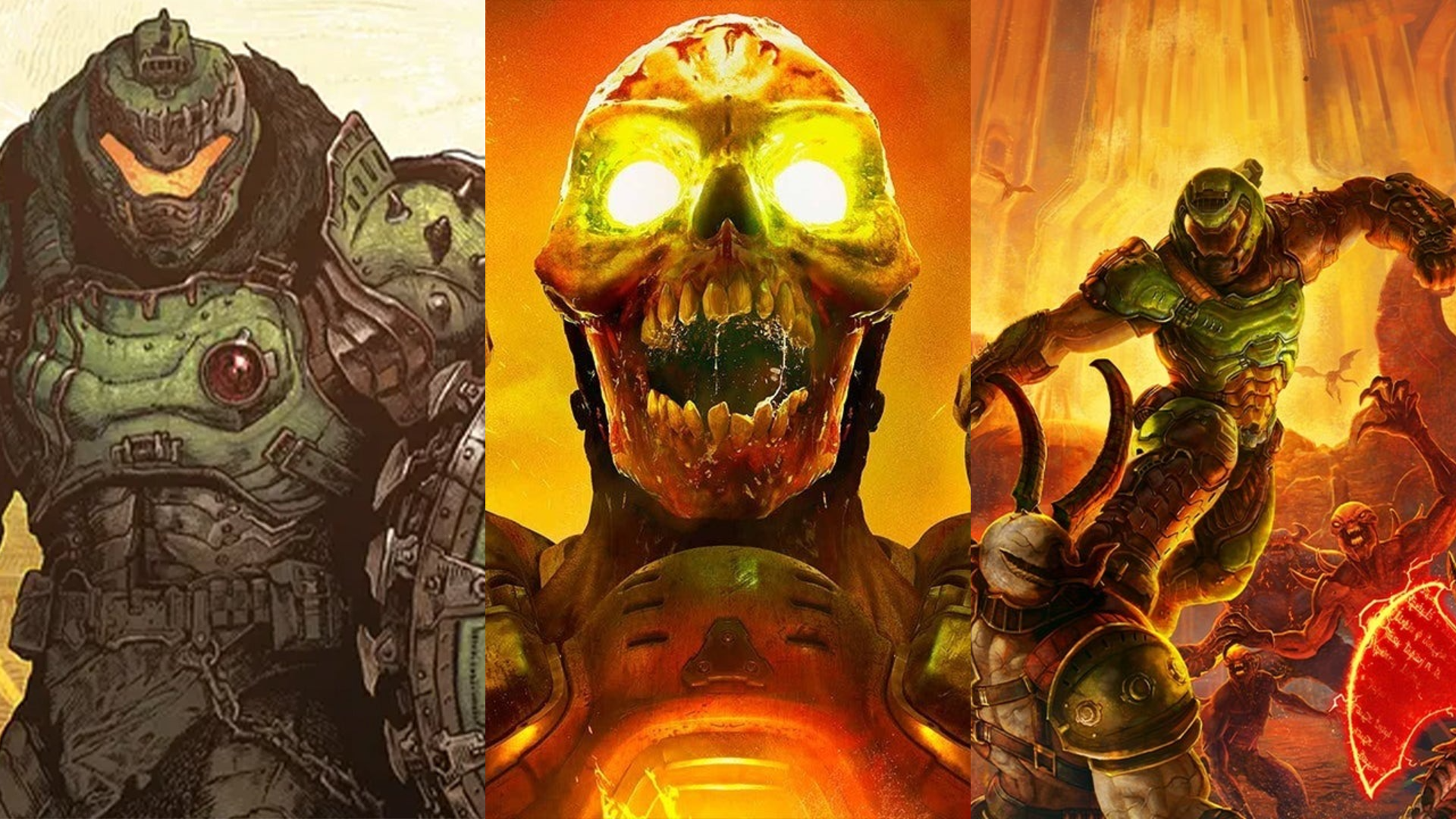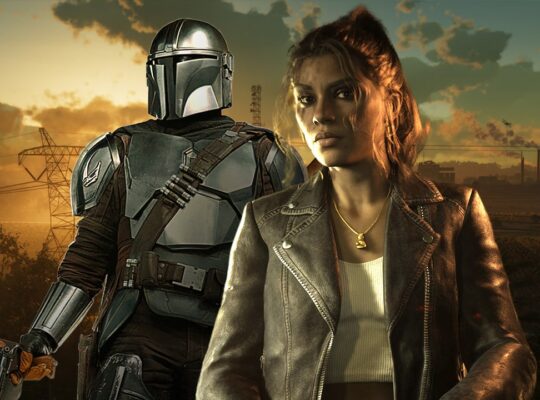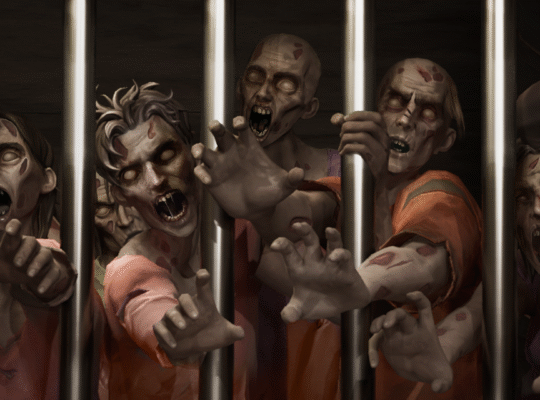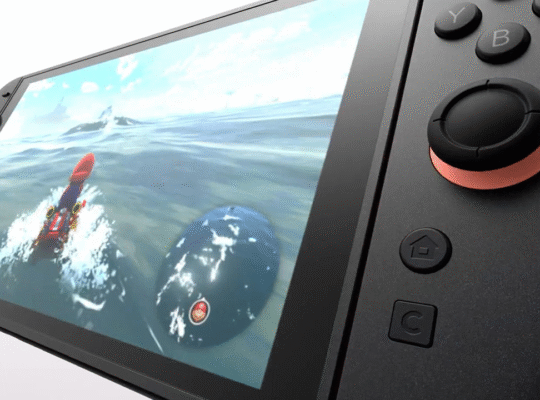
Doom. Four letters, two gunbarrels, one space marine and boatloads of demon guts is all it takes to change the face of gaming forever.
Id Software’s seminal series is ground zero for first-person shooters, PC gaming, online multiplayer, community modding, speedrunning, and so, so much more.
Video games are still living in the shadow of this infernal masterpiece three-decades later. The FPS genre has evolved a lot since the days they were called “Doom-likes,” and so has the series itself– with varying degrees of success.
How does your favorite title rank among the seven (or so) main entries in the franchise? Which Doom games cover themselves in guts and glory, and which are cursed to wallow knee-deep in the unalived? We promise not to be too rough as we rip and tear through the series to bring you every Doom: Ranked.
7. Doom 3
2004’s Doom 3 is the end result of an ultimatum John Carmack issued to the rest of Id, and it kind of feels that way.
Carmack was dead-set on making a next-generation remake of Doom to showcase the impressive new light and shadow capabilities of the IdTech 4 engine. Doom co-creator John Romero was long gone at this point, and the remaining Id OGs were staunchly opposed to what they saw as a retread– a tech demo in search of a purpose. Carmack very publicly overruled them, and thus we have Doom 3.
To their credit, Carmack and crew made some big changes in pursuit of modernizing the series. Doom 3 is a slower, more story-driven affair than the first two games. There are voiced NPCs and lore-filled terminals that you interact with in a super clever way. Its jumpscares and “monster closets” instill a sense of anxious survival horror, a sharp contrast to the run-and-gun arcade frenzy of classic Doom.
It’s a valiant effort to bring Doom to a new generation of gamer culture. The problem is that this generation was extremely ugly.
The graphics tech itself is awesome. The projectiles and explosions almost make the game’s dull metal hallways interesting, but Id’s decision to showcase the game’s lighting engine is the game’s fatal flaw. You can’t see anything. Intentionally. The game is tuned to be super dark until you switch to your flashlight, which you cannot use at the same time as your weapon.
This was largely met with derision from fans, but the combat is actually tuned around it– juggling between seeing your enemy and shooting it creates a huge amount of drama and tension. It’s actually kind of cool, just not that fun. A popular “duct tape” mod addressed this, as did Doom 3’s “BFG Edition” remaster, but it somehow makes things worse. Having your light and your gun trivializes the entire combat loop. It’s the worst of both worlds.
The new demon designs are sapped of color and charm, turning iconic abominations into run-of-the-mill Umbrella B.O.W.s. It’s impossible to envision them as anything but their counterparts in the 2005 movie. The aesthetic is very of its era and just all wrong for Doom.
Doom is a heavy metal mural airbrushed on the side of a speeding van. Doom 3 is the embodiment of nu metal butt rock– more Mudvayne than Metallica. Decent for what it is, but it would take 12 years more before the series got a refresh with some actual rizz.
6. Doom 64
Some fans insist that Doom 64 is the true sequel to Doom 1 and 2. Id closely supervised Midway Games’ development of the N64 exclusive, resulting in an interesting but ultimately inconsequential side entry in the series– A Doom gaiden.
The game still utilizes sprites, but instead of digitized photos of hand-sculpted maquettes, Doom 64’s demons are pre-rendered with the same SGI tech as Donkey Kong Country. The enemy designs are slightly more subdued, but nowhere near the grey blobs of Doom 3, and they’re a higher resolution than the vintage bestiary.
Doom 64 isn’t hurt too much by its titular console’s limitations, but there are fewer enemies thanks to small cartridge sizes, and the reduced animation frames on the shotguns really robs them of their kick. Worst of all, Midway couldn’t get multiplayer working, despite four-player, split-screen Doom deathmatches being a perfect fit for the system that gave us Goldeneye.
Still, on the whole the game looks great. Doom 64 has a uniquely bleak, gothic vibe, with a gorgeous colored lighting system that’s impressively sophisticated for the era.
Instead of MIDI speed metal, the soundtrack is a dark ambient drone. There’s no HUD, no grimacing Doomguy face, only subtle numbers and letters rendered in bleary N64 textures. The gameplay is largely the same, though a new scripted events system creates neat opportunities for map design.
Doom 64 seems like the game Carmack’s co-owners were afraid Id was going to make: More Doom, slightly different. It’s just not different enough to warrant a higher place on the list. Doom 64 is a fun, fascinating, evolutionary dead end.
That brings us to another followup that doesn’t reinvent the wheel:
5. Doom II
Today’s fans demand big changes to make a sequel worthwhile, but in the olden days folks were perfectly happy with an iterative successor like Doom II.
32 new levels designed in-house by Id, a bunch of new enemies, and just one new weapon was more than enough to make Doom II the highest-selling software program of 1994.
Doom II is Doom refined. Old monsters are reconfigured in clever ways while fresh faces like the Revenant and Arch-Vile add more complexity to demon distribution. Your arsenal has only one addition, but it’s a weapon that would come to define Doom: the Super Shotgun.
So, with all this great new stuff, shouldn’t Doom II be a straight upgrade to the original? It almost is, but Doom II’s map design just doesn’t hit the same.
Maybe it’s the amount of larger, more open levels compared to the disciplined precision of the original’s holy spaces. Doom II was billed as “Hell on Earth,” but the aging tech couldn’t really produce convincing Suburbs or Downtown the same way Duke Nukem’s Build Engine would a couple of years later.
It’s also possible that John Romero was checked out. On the verge of leaving the company after clashing over Quake, Romero contributed fewer and less-interesting maps to Doom II compared to his ten definitive levels from the first game, which may be why Id programmers snuck their co-founder’s disembodied head inside the final boss.
Doom II feels like less of a journey than Doom. As shareware, the first game was divided into three (later four) clear episodes, with interstitial map screens between levels tracing your path of destruction across the moons of Mars until thy flesh is consumed by Hell itself.
As a boxed game from the get go, Doom II is presented as a barely-connected 32-level megawad. The game supposedly depicts a full-on demon invasion of Earth, but this is mostly conveyed through three different skyboxes.
Map duties were largely handled by designers American McGee, of later Alice fame, and Sandy Peterson, who really shines with unique gimmick levels like Tricks & Traps and the infamous Barrels o’ Fun. Doom II has some great maps and lots of innovative twists on the formula, but on the whole it’s a less cohesive and satisfying package than the first game.
At the time, map quality didn’t matter quite as much. Fans had already been sharing their own custom levels en masse, passed around as .wad files via floppy disks and 28-kilobaud modems. Doom II is almost more notable as a platform than as a standalone title. It gave modders and wadders a chance to shine and even go legit.
A group called TeamTNT created two megawads that impressed Id so much they bought the rights and slapped them together for retail as “Final Doom.” Today, these maps and others have been fully incorporated into the canon by modern releases of Doom II. It makes the game a more comprehensive product, but that’s not enough to elevate it above our next, and most recent entry:
4. Doom: The Dark Ages
The Dark Ages couldn’t be more different than Doom II. A sequel that refuses to offer more of the same, The Dark Ages takes a sharp turn away from the neon frenzy of Doom Eternal into a grim and gothic new setting, with drastically altered gameplay to match.
If Eternal is Doom meets Devil May Cry, The Dark Ages is Doom Souls. The gameplay isn’t slow, like some of the trailers would have you believe, but it is deliberate, and the player’s individual actions have more consequences.
Stand and fight is more than just a marketing slogan, it’s the only way you’re going to take down some bosses and badder enemies. Melee combat means getting up close and personal with monsters, trading mace blows and shotgun blasts in a boxing match from hell.
Gone is Eternal’s verticality, deliberately downplayed in homage to the original Doom’s lack of a jump button. Projectiles move more slowly, choking the battlefield with patterns that evoke bullet-hell shmups and Serious Sam. Glory kills are a shadow of their former, well, glory, taking a backseat to the new rhythms of The Dark Ages’ combat.
The most impactful addition to the Doom formula is the parry mechanism that allows the player to deflect green attacks with the integral new shield saw. It’s the backbone around which the game is designed and it’s not going to click with everybody, but
The Dark Ages brings a few firsts to the franchise, like friendly NPCs fighting alongside the Slayer and difficulty sliders to make the series more accessible. It’s also the first game since Doom 64 to lack any kind of multiplayer.
The Slayer trilogy’s online components have been a noble but largely perfunctory effort. Id decided to ditch it entirely and focus on making the most compelling campaign they could, exchanging multiplayer and snapmap for dragon riding and giant mechs. It’s bummer to see the IP that literally invented deathmatch drift away from multiplayer entirely, but frankly a lot of fans aren’t going to miss it.
You have to give modern Id credit: they just will not make the same game twice. Will The Dark Ages become the new way forward for the franchise or merely an interesting diversion like the aforementioned Doom 64? Only time will tell if it has the same staying power as our next entry,
3. Doom: Eternal
Doom: Eternal is a Doom game’s Doom game. It’s everything a fan of Doom 2016 would expect from a sequel, and while the vibe is different from its predecessor, the whole experience feels more vibrant and alive.
The Doom franchise isn’t exactly known for its awe-inspiring vistas and diverse biomes, but Eternal impressively mixes snow levels and baroque ivory fortresses in with the usual techbases and fleshy hellscapes. We’re not used to seeing this kind of environmental variety in Doom, and it’s a refreshing change of pace.
The monsters have shed the last remnants of their realistic Doom 3 designs and embraced their inner iconography. Cacodemons bleed blue again, the Imps have all their spikes back, and the former humans have once again embraced the crew cut. If Illumination ever made an animated Doom movie, this is what the monsters would look like.
In line with the more expressive demons, Doom: Eternal embraces its inherent arcadeiness. The Doomslayer now has extra lives, which he secures from glowing in-world pickups that literally say “1UP.” Weapons and items now float off the ground and spin around, easier to spot and snag as you double jump across implausible arenas with not one but two airdashes.
Doom: Eternal is unrepentantly a video game, designed for maximum readability and playability. It’s worth noting that the game’s technical performance is impeccable, offering smooth frame rates across a variety of hardware that would make its famously compatible ancestor proud.
When it comes to combat, Doom: Eternal asks a lot more of you than 2016. Ammo is much more scarce, forcing you to juggle through most of your weapons in nearly every fight. Choosing the right gun for the right enemy and exploiting their weak spots is essential, though some fans argue that the Marauders, dark Doomguy counterparts with a limited vulnerability window, are a bridge too far for the power fantasy.
Doom: Eternal’s biggest flaw is that it’s doing too much. The Doomslayer has new guns and enemies to deal with, a meathook to yank yourself across the battlefield, and a shoulder cannon with grenades and bombs and fire belches that are crucial for survival– on top of an avalanche of additional collectibles, resources, and upgrade trees
Even the Doomguy himself has gotten a little too big for his armored green britches, having somehow come into possession of a massive outer space fortress between games, a vast hub to explore that has plenty of great easter eggs and secrets but also a lot of locked doors and samey-looking hallways to get lost in.
Speaking of getting lost, Doom: Eternal suffers under a sheer mountain of lore. Endless paragraphs of indecipherable sci-fi fantasy with more proper nouns than a phone book are at your bloody fingertips. To some, it’s a welcome addition that makes the series that much more rich. For others, it’s an albatross around the neck of Doom’s action-first ethos: start shooting as soon as the screen melts.
It’s an excellent sequel, superior to its predecessor in many ways, but as a total package, it falls just short of
2. Doom (2016)
Doom 2016 is the platonic ideal of Doom.
It marries the kinetic and aesthetic purity of the original with a winking, self-aware tone that evokes not just the first game’s “Hurt Me Plenty” attitude but society’s perception of the series.
This is the Doom we envisioned in our adolescent brains. It’s the Doom of the infamous ‘90s comic, the ultraviolent nightmare that Jack Thompson and Joe Lieberman warned us about– and it is glorious. But Doom 2016 almost didn’t happen.
The game was originally conceived as “Doom 4,” designed around a dull-looking modern-day demon invasion that incorporated some of the worst excesses of 7th-gen shooter design.
Scripted setpieces, cover-based firefights, and health regeneration earned Doom 4 the derisive nickname “Call of Doom.” Why “press F to pay respects” when you could “press F to rip a demon’s jaw off and slice open its belly?”
Marty Silva and Hugo Martin salvaged Doom 4 from the shores of development hell by stripping it into a back-to-basics, gleefully indulgent romp that fully rekindles the lost soul of the series.
It’s no coincidence that retro “boomer shooters” comeback began right around Doom 2016. The aggressive, push-forward gameplay has you leaping onto cacodemons in midair as Mick Gordon’s impossibly detuned guitars belch out riffs of pure hype. It’s here we first see the glory kills, expanded on in future sequels but never quite as elegant as their debut.
Simple is the operative word of Doom 2016, and sometimes to its detriment. Unlike later games, there’s little incentive to cycle through your weapons. It’s easy to let the rockets or the SSG carry you to the Spider-Mastermind. Still, the barebones approach is appreciated, particularly when it comes to the plot.
It was John Carmack who famously compared video game stories to those of x-rated movies: “It’s expected to be there, but not important.” Doom 2016’s less-is-more approach is extremely refreshing after the dense Metal Hurlant nightmares of its sequels. The storytelling is never really bad in Eternal or The Dark Ages, but also never quite as funny as the Doomslayer seething with impatient rage as exposition drones on.
It took some huge guts to name the 2016 reboot “Doom,” but that very confidence is what propels this game to greatness. There’s only one shooter in the world that could possibly top Doom 2016.
But first:
1. Doom
Doom has more than earned its spot on the Mt. Rushmore of the medium.
As chronicled in the excellent book Masters of Doom, the game’s creation is a brilliant example of developers stripping away extraneous details and focusing on what works. As a followup to Id’s groundbreaking but plodding and plain shooter Wolfenstein 3D, original designer Tom Hall dreamed up a sprawling space RPG with multiple playable characters, an inventory system, and a thick “bible” filled with backstory and lore.
Carmack and Romero rightly recognized all of this as chaff that got in the way of the fast and brutal gameplay they envisioned. They slowly stripped away unnecessary flavor and realism until what remained was a bare-bones, no BS exercise in adrenaline. Doom is like the titular Xenomorph in Alien: One must respect its purity.
There’s no mouselook in the original Doom. Aiming on the y-axis literally doesn’t matter, you can hit that Imp on a ledge above you as long as it’s centered on your gun. Doomguy cannot jump, and his only interaction with the world besides shooting, punching, and chainsawing is a single “use” button that you’ll spam endlessly as you search each legendary map for secret doors.
Anyone can pick up the game today, whether through a fan-made source port or an official rerelease, and immediately understand the assignment. Run, gun, rip and tear. Find keys and snag powerups to keep Doomguy alive as he stares bullets through your soul from the UI.
To say Doom has aged is to say Tetris or Pac Man has aged. Its simplicity is its greatest strength– there’s almost no friction between you and the coveted “flow state” towards which all action games aspire. Doom’s kinetic appeal makes it immortal,
Released as shareware, anyone with a working PC was free to play the first episode of Doom, from the iconic first moments of E1M1 to beating the Bruiser Brothers in Phobos Anomaly. You could mail a check to Id if you wanted more, but the sheer accessibility and availability of Knee-Deep in the Dead’s nine perfect levels all but ensured Doom’s dominance.
Doom became shorthand for gaming itself. The moral panic over video game violence resulted in pundits and politicians alike warning parents of the gory, demonic slaughter simulator warping their children’s minds, blaming the shooter for real-world tragedies. It’s a sad footnote in an otherwise unparalleled success story, and a formative moment in gaming history that helped shape a still-developing industry.
At the start of every new project, the current developers at Id play through the original Doom, to re-familiarize themselves with its brilliance and look for interesting new ways to expand the formula.
Every single entry on this list is in some way a response to the first game, either trying to recapture its glory or recreate what makes it fun. Some games succeed, others have faltered, but they’re all chasing after perfection that was already achieved in 1993. Doom is still the best Doom.
Where does your favorite Doom rank on the spectrum? Would you have put Eternal above 2016? Should we have included the surprisingly awesome mobile phone RPGs? Leave a comment and let us know.













